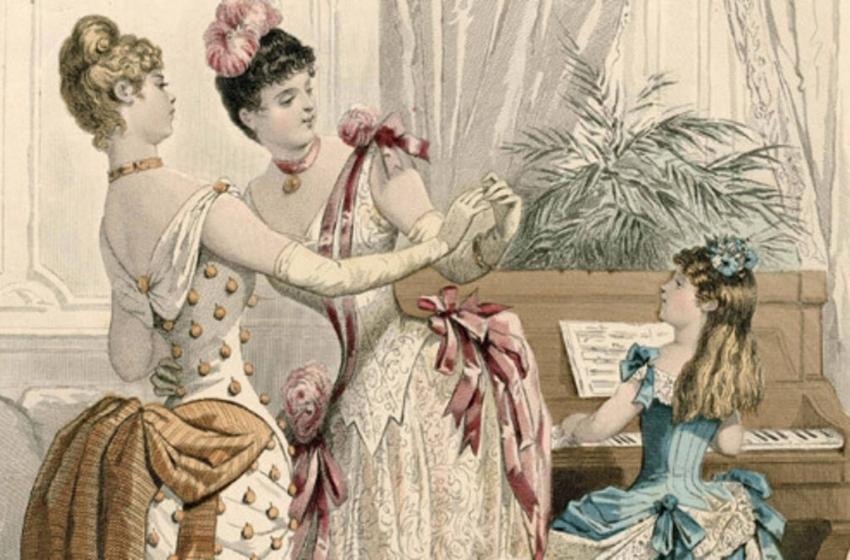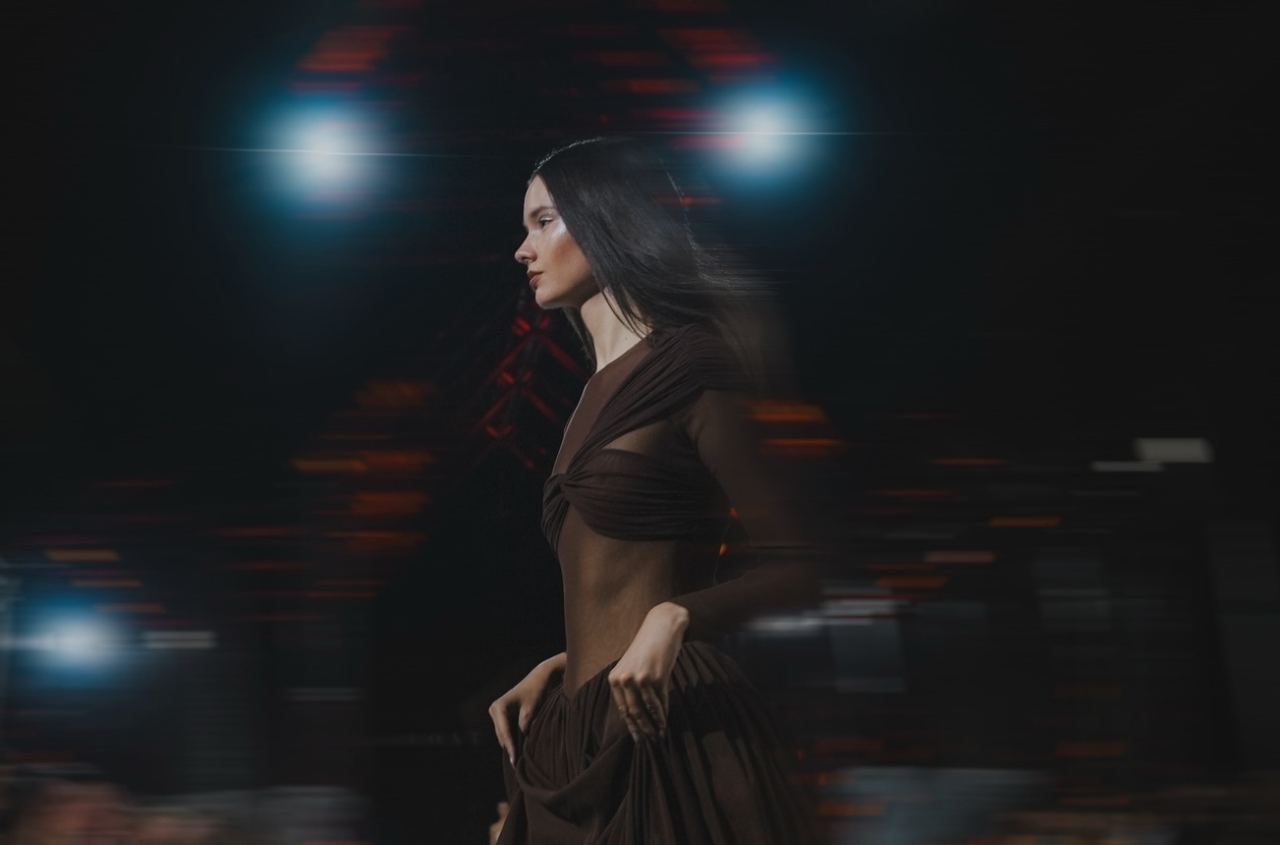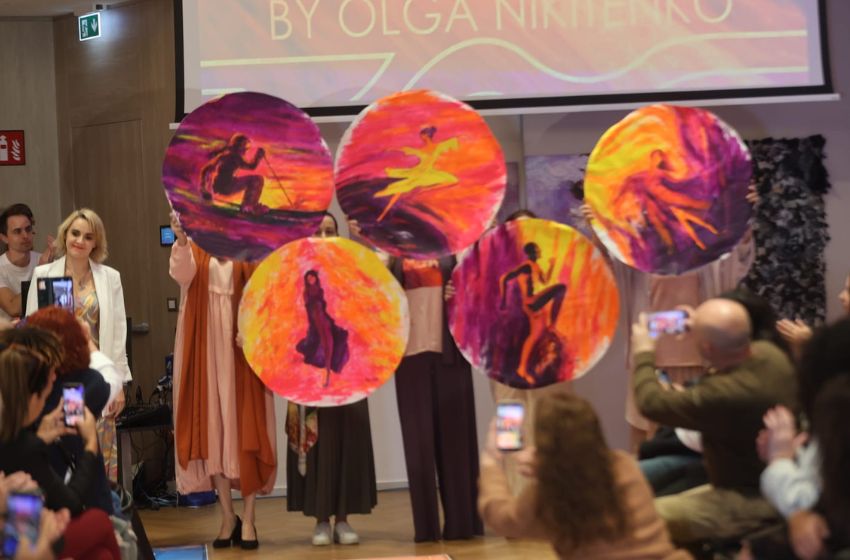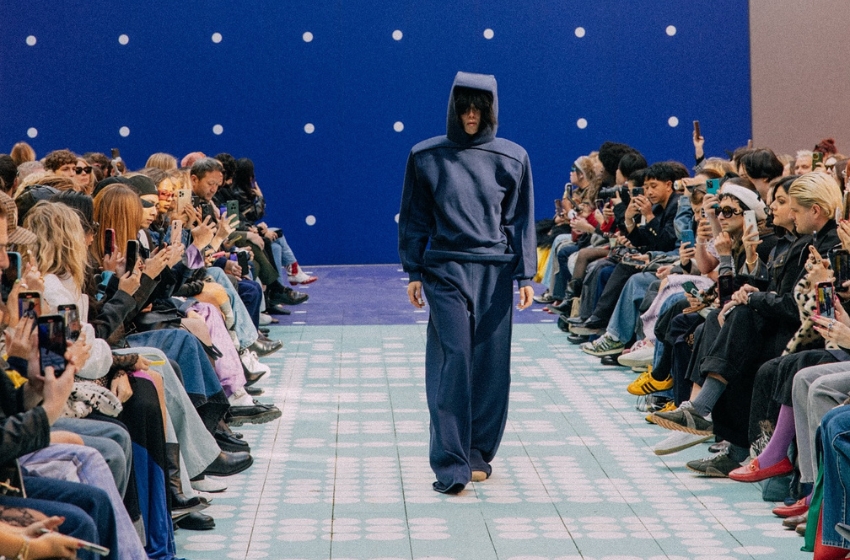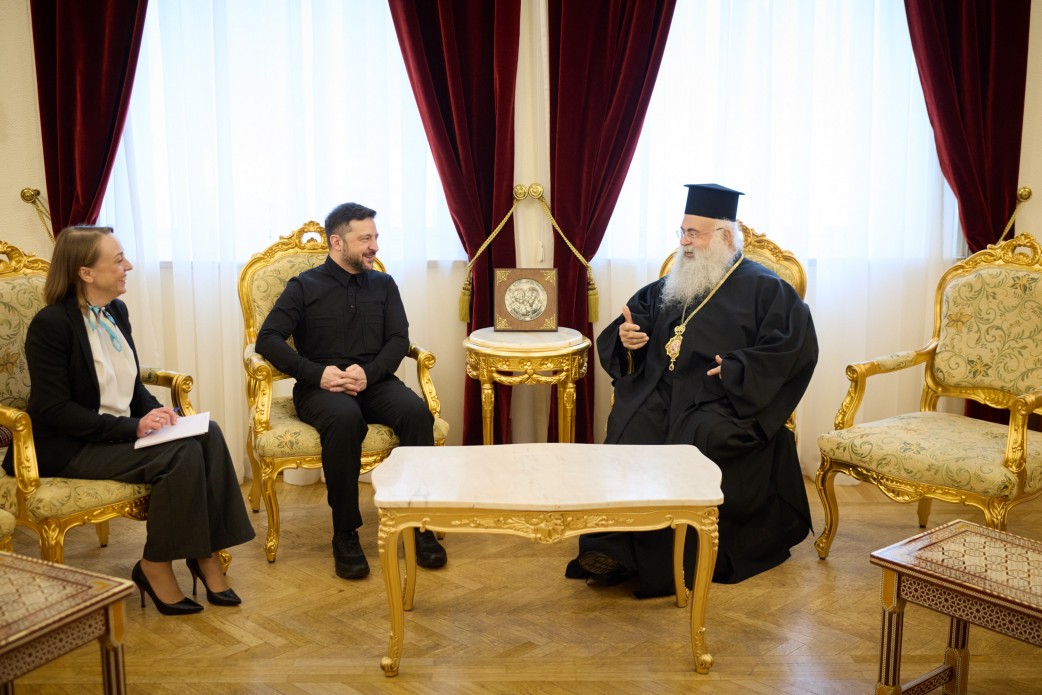200 years Fashion: ladies dressed in the "Palais Royal" and shone at the balls of Langeron and Marazli. We will try to reproduce the "fashionable picture" of the century.
Every year, fashion trends make turns, returning to one or another starting point. Such "greetings from the past" happen more and more often. And many are already quite familiar with the concept of "vintage". Those who keep up with fashion are shelling out big sums for cameos and brooches from the century before last. And even if we are not talking about the most advanced fashionistas - well, what beauty has not tried on herself at least once a gentle romantic image, has not sighed over her curls and corsets. The women of Odessa were very lucky in this regard - fashion has taken root here along with the foundation of the city itself. Two hundred years ago women from Odessa dressed practically on the same streets as modern coquets of South Palmyra. And they did it with great sense of taste.

Photo from the archives of the Odessa Museum of History and Local Lore
The ladies of the Vorontsov era bought the most luxurious toilets in boutiques on Deribasovskaya, Ekaterininskaya and Lanzheronovskaya streets, as well as on Teatralnaya and Ekaterininskaya squares, - write Odessans of those years. It housed shops with the most "fresh and trendy" models, which were delivered straight from Paris and London. In an elite shopping center on Teatralnaya Square - "Palais Royal" - they sold "silk fabrics, black and coloured velvet, French shawls, linens, table linen (tablecloths, napkins, etc.), feathers, madapolam, cambric, nansuk, jaconet, muslin, woolen fabrics, popelin, alpagues, fashionable silk fabrics, cambric, and cambric shawls, stockings, socks, ties, men's and women's shirts, carpets, furniture fabrics, curtains, woolen and pike blankets, grandfathers and castor; there is also a large selection of ready-made ladies' dresses.
On Deribasovskaya there were three Parisian Fashion stores at once. And on Richelievskaya, in Madame Lobadi's salon, several times a year one could hear about Parisian fashion firsthand, the hostess invited milliners from the capital of France for this purpose. It is noteworthy that Odessa's great-great-great-grandmothers were incredibly lucky: for them luxury items were much more affordable than for other residents of the Russian Empire. Indeed, thanks to the efforts of the Duke de Richelieu in South Palmyra, from 1819 to 1859, a free port was in effect - the abolition of duties on imported goods. The duty-free regime has practically turned the city into an international trade center. Traders who traded with the empire brought their goods to Odessa and sold them here without duty. Together with them, the city was flooded with the milliners from Paris.


To put on the same dress at the ball more than 4 times is not "bon ton".
Ladies and gentlemen diligently selected outfits for going to balls and masquerades (the so-called masquerades). The gentlemen were mostly in tailcoats, and the ladies - in ball gowns. Moreover, even in the most elegant dress, according to the etiquette in force at that time, a lady could appear no more than 3-4 times.
Richelieu organised balls with "live chess pieces". Only in the winter holidays in honour of the beginning of 1824, 5 parties were held in Odessa: at the Vorontsovs, Langeron's and a charity masker at the theatre. Particular attention was paid to the decoration of the receptions. For example, when, in 1837, Tsar Nikolai Pavlovich and Empress Alexandra Feodorovna were walking in the Stock Exchange at a ball in their honour the Empress's boudoir was adorned with Turkish shawls, all the columns were covered with a gilded trellis, along which live vines curled with bunches of grapes of all local varieties.

Several hundred people danced at the balls of Mrs. Marazli and Mrs. Papudova, and once - 580 guests. They walked magnificently in the houses of Skarzhinsky, Count Leaders, Count Tolstoy, where "the orchestras thundered and there was a sea of ​​champagne." But most of all, the Odessans fell in love with the costume balls - "maskerats and entertainment parties" - on which ladies and gentlemen appeared in outfits worth several thousand rubles each. At the dancing room one could meet a Turk in gold, a concubine of a harem, Russian boyars, "Sun", "Crescent", "Night", "Forest demon", "Sailor". At one of the balls, the "Air" costume appeared - so transparent that many ladies immediately left the ball. But a whole swarm of men surrounded the almost naked young lady.
Nest or Feather on the head is mauvais ton

In the 19th century, intricate hairstyles with feathers, skillfully intertwined braids in ancient Greek and Roman motifs were in fashion, and at balls or in theatres, ladies sported turbans.
The Moscow Telegraph magazine wrote, in the 1920s and 1930s, turbans were of different shapes, with feathers, fresh flowers and ornaments. Moreover, women from Odessa tried to outdo each other in their hairstyles, and not to copy.
So, "if one of the first beauties of that time, Princess Naryshkina, did her hair a la Charlotte Corday, then it was in bad form to appear in the same way," wrote contemporaries of women of fashion. In pursuit of beauty, Odessa women weaved ships, bouquets, nests and birds from feathers and precious stones into curls.
By the end of the 19th century, the fashion came for short hairstyles a la titus, not only for men, but also for women. In memory of the executed French revolutionaries, the gentlemen shaved their hair at the back of their heads, and the ladies cut their strands short.
Diamonds on a pooch

In the years of the free port, all foreign goods were bought by the townspeople without duty, luxury goods were very cheap. And the duty on goods was paid only when leaving Odessa, so many tried to outwit the customs officers by transporting fashionable lace and precious jewelry from the city. As the local press wrote, women were often involved in smuggling at land customs. So, a certain lady hid a wall clock under a lush dress, which, when examined, began to beat and gave her away. Often the young ladies were wrapped in lace under the dress. Having caught several of these ladies, the local warden began to feel all the well-fed girls, interrogating: "Is it natural or fake?"
And once an enterprising Odessa resident transported contraband worth 10 thousand rubles ... for a dispute with the governor of the Novorossiysk Territory. A certain landowner told to Count Vorontsov: "There is nothing easier than getting through customs." And he bet on the value of his estate (50 thousand rubles). On the appointed day, Vorontsov arrived at the customs office, to which the landowner also drove up in a carriage. As soon as the customs officers inspected the disputant: they stripped him to his underwear, and examined the underwear, cut the carriage into pieces, checked the horses, but found nothing. Then the landowner called to him a white poodle who was running after his carriage, and during a search of the customs manager who was dozing at the table, he ripped the dog up along its back with scissors. Under the poodle's skin were ... expensive lace, and diamonds wrapped around the little pooch's little body. The landowner simply painted its head, paws and tail with white paint, and then dressed up as a "poodle".
"Slave" bracelets from Odessa

Jewelry in the 19th century indicated the status and heartfelt stories of their owners. In the 30s. jewelers masterfully minted coloured gold plants with coloured stones on brooches and bracelets, as well as pendants in the form of miniature Gothic sculptures. At the same time, the heart, anchor and a cross (symbols of love, devotion and faith, respectively) came into fashion. From this set of symbols, jewelers ordered the ladies to build classified messages. And in the 1840s, there was a fashion for snake bracelets wrapped around the arms.
They wore large bracelets of gold and silver with precious stones and cameos. They were worn over gloves at balls and at the theatre. In the journal Sovremennik the journalist Panaev writes: "These bracelets are so massive, so huge that they can be easily seen from the stalls of the theater." True, they were worn not only on the hands. In the magazine Fashionable Light in 1892, women of fashion are advised to weave such adornments into the "Greek knot" hairstyles.
Almost the entire century paired bracelets did not come out of women's fashion, the so-called "esclavages" (from French: "slavery") or "heart bondage" were especially popular, which consisted of two rings - on the wrist and at the hand, fastened by a chain with a small clasp in the shape of a heart. "These bracelets are exported from Odessa; they are iron and gold", Moscow Telegraph wrote. Bracelets-medallions with portraits, which were worn on the left hand and called "sentiment", were very fashionable at that time. Also in the 19th century, ladies wore brooches on the bodice.
In the 70s, a star always appeared on every jewelry, then pearls and insects came into fashion. At the end of the century, diamonds were also firmly entrenched. For a secular lady, it was considered unacceptable to appear in a dress with a neckline and without a diamond, but etiquette also allowed costume jewelry.
"Fake diamonds (rhinestones) should be worn by ladies who, according to their position, can be real and have a toilet and furnishings suitable for diamonds," wrote the legislators of etiquette in the "Collection of tips for ladies on how to dress with taste." In the same collection, they called it tasteless to adorn oneself with diamonds in "a toilet at home or for a walk."
Fashionistas

As now, many fashionistas of that time preferred tailoring. With an excitiment women of Odessa pronounced the names of local tailors: Langlet, Tambute, Michel, Verelle, who successfully bypassed the Parisian couturiers. The milliner Tomasini can rightfully be called the queen of this world. According to the recollections of contemporaries, the legendary seamstress created such toilets that the secular lionesses of St. Petersburg stood in line for her, and local ladies kissed the hand. Thomasini dressed her favourites with such taste that they immediately differed from others. An enterprising woman from Odessa became so rich that she could afford to live in Paris in her own hotel.
To be continued...
Based on the materials Sevodnya









